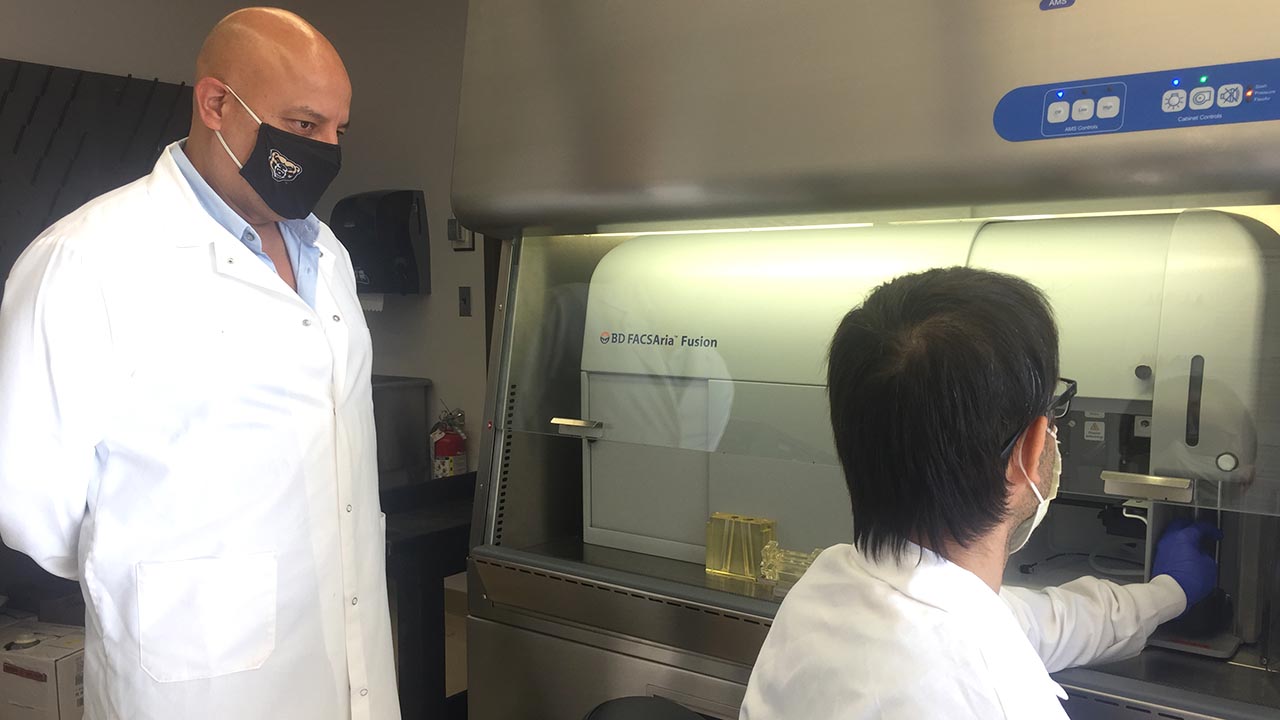- YouTube
- TikTok
OU researchers acquire flow cytometry cell sorter with NSF grant
Instrument will allow for hands-on collaborative research in the areas of amphibian biology, plant genomics, and stem cell biology

A grant from the National Science Foundation recently helped researchers at Oakland University acquire a flow cytometry cell sorter, a scientific instrument which will allow for hands-on collaborative research in the areas of amphibian biology, plant genomics, and stem cell biology.
“A flow cytometry cell sorter is an instrument that is used to perform fluorescent activated cell sorting, which means it can separate or sort small particles, such as cells, chemical compounds, beads, and proteins that are suspended in a stream of fluid,” said Dr. Luis Villa-Diaz, an assistant professor in the Biological Sciences and Bioengineering departments at OU.
“It does this based on fluorescent signals coming from the particle after it has been stimulated by lasers in the instrument,” Villa-Diaz said. “If the laser signal makes the particle glow, then a computer will detect that signal and quantify it, and also will direct that particle to a particular container to be collected. Then we can recover the desired particles after they’re sorted and use them for other experiments or purposes.”
The flow cytometry cell sorter was obtained using a Major Research Instrumentation (MRI) grant provided by the National Science Foundation. Under the terms of the grant, the NSF covered 70 percent of the cost — approximately $544,073 — while a collaboration between the Office of the Provost, the College of Arts and Sciences, the Department of Biological Sciences, the Department of Chemistry, the Eye Research Institute, and the Center for Biomedical Research provided the remaining 30 percent ($233,174).
Villa-Diaz will serve as principal investigator on the grant, while Dr. Shailesh Lal, a professor of Biological Sciences and chair of the Bioengineering Department; Dr. Thomas Raffel, an associate professor of Biological Sciences; and Dr. Gerard Madlambayan, an associate professor of Biological Sciences, will serve as co-principal investigators.
“I will be using the flow cell sorter to separate different populations of stem cells based on the expression of proteins at their cell membrane,” Villa-Diaz said. “After sorting and enrichment of the desired cells, we will be able to use and compare the different cell populations using other experimental conditions.”
The flow cytometry cell sorter can also be used for a variety of other projects, including the determination of basic biological functions and signaling directed by cell surface proteins in stem cells, the role of endothelial cells on anti-apoptotic pathways, the regulation of pre-mRNA processing in plants, the effects of temperature in amphibian immunology, the development of tubular organs, and basic understanding of DNA repair mechanisms.
“The instrument will be available for use by all investigators at OU and investigators from neighboring educational institutions, as well as by users coming from other industries, although there will be a fee involved,” Villa-Diaz said. “The instrument will also be used for educational purposes in multiple classes, including biology, chemistry and bioengineering.”
For more information regarding the use of the instrument, contact Kathie Lesich at lesich@oakland.edu or Suraj Timilsina at surajtimilsina@oakland.edu.


 October 9, 2020
October 9, 2020